
- AMERICA'S CUP
- CLASSIFIEDS
- NEWSLETTERS
- SUBMIT NEWS


America's Cup: J Class to hold 2024 World Championships in Barcelona from October 7-11, 2024
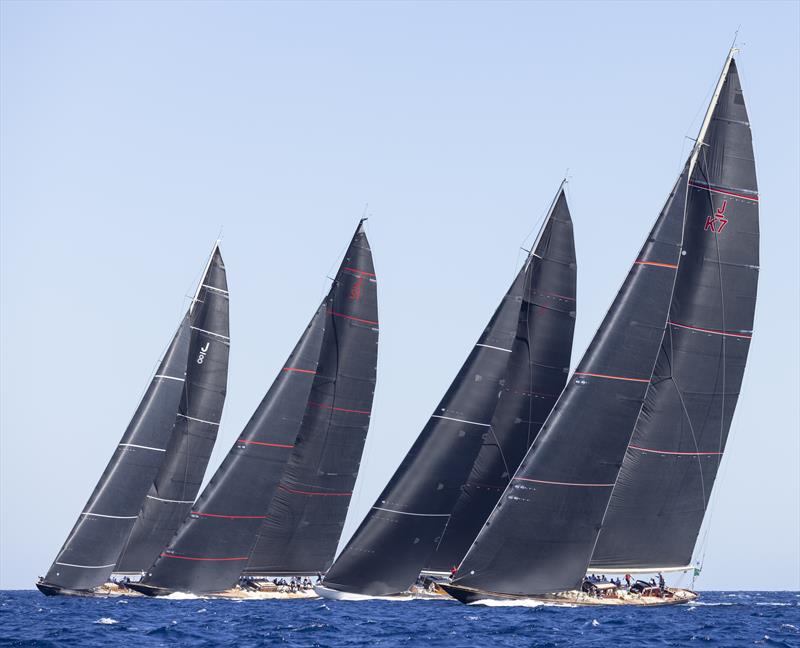
Related Articles

- Nautic Shows
- America’s Cup
- Classic Yachts
- Motor Yachts
- Sailing Yachts
- Superyachts
- Yachts News
- Destinations
- Yacht Clubs
- Yacht Club Monaco
- Boat Racing
- Meta Yachts

The allure of the America’s Cup is set to be enhanced by the majestic presence of the J Class fleet as organizers extend a prestigious invitation for their participation in the upcoming event. Scheduled to take place from October 7th to 11th, 2024, the J Class World Championship in Barcelona promises to be a spectacle of grandeur and nostalgia.
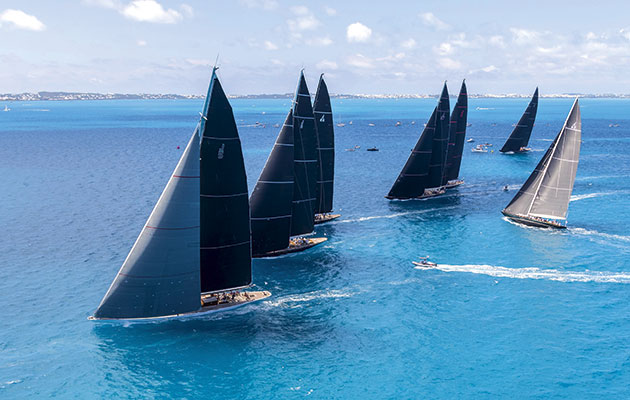
Comprising three meticulously refitted original yachts and six newly constructed vessels designed to replicate the iconic hull lines of the 1930s, the J Class fleet boasts a total of nine active yachts worldwide. Among them are the renowned Endeavour, Topaz, Ranger, Svea, Velsheda, Shamrock V, Rainbow, Hanuman, and Lionheart, each bearing a storied history dating back to the illustrious America’s Cup races of the 1930s.
Grant Dalton, CEO of America’s Cup Events, expressed his excitement for the inclusion of the J Class in the regatta, emphasizing their integral role in the Cup’s rich heritage. “Seeing those boats being raced just off the Barcelona waterfront will be a spectacle for everyone on the water or watching from the shoreline – we cannot wait to see them in action,” remarked Dalton.
Stuart Childerley, Class Secretary of the J Class, echoed Dalton’s sentiments, expressing gratitude for the opportunity to showcase the fleet’s legacy amidst the prestigious America’s Cup regatta. “The boats will arrive at Port Vell and be situated right in the heart of the superyacht basin, giving spectators a fantastic opportunity to see these historic yachts up close,” noted Childerley.
The Class Association is actively encouraging J Class owners to commit to the 2024 event, with five confirmations received to date. As anticipation builds for this unparalleled gathering of maritime history and contemporary excellence, the J Class World Championship promises to captivate audiences both on and off the water, offering a rare glimpse into the timeless elegance and enduring spirit of these iconic vessels.
- Americas Cup
RELATED ARTICLES
Luna rossa faces major setback with traveller break and structural failure, thrilling sunday in barcelona: ineos britannia and luna rossa prada pirelli one win away from louis vuitton cup final, the many moons of the america’s cup: luna rossa’s journey from auckland 2000 to barcelona 2024, first day of louis vuitton cup semifinals sets clear intentions for top teams, nyyc american magic to face luna rossa prada pirelli in louis vuitton cup semi-final.

Subscribe to our newsletter
To be updated with all the latest news, offers and special announcements.
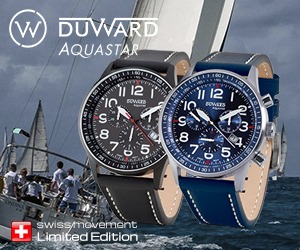
LATEST ARTICLES
Editor picks, nautic magazine and duward watches announce prestigious collaboration: introducing the aquastar summer sailing 2024 bcn edition, canadian beau lake introduces the tahoe ’14 and lugano ’14 electric runabouts, underwater adventure and exploration with deepflight’s super falcon 3s, popular posts, mirabaud sailing video of the century: celebrating 2 decades of passion, young designer of the year 2022: ioana valentina corcodel reveals 65m ophelia concept, the nacra15 world championships open in la grande motte, france, popular category.
- Regatta 852
- America's Cup 502
- Motor Yachts 264
- Boating 220
- Sailing 192
- Superyachts 191
- Yachts News 174
- Sailing Yachts 167

Before the J Class yachts came into existence, yachts were designed to be bigger and bigger. The towering rigs of the Big Boat Class such as ‘ Lulworth ’ and ‘ Britannia ’ dwarfed all other yachts. The late 1920s heralded discussion and agreement of the Universal Rule. This new formula controlled the size and displacement of the new yachts, enabling them to be raced as evenly as possible. Almost immediately, designs were being commissioned for the new, massive ‘Bermudan rigs, with no bowsprits’.
The rule was based on ideas proposed by Nat Herreshoff allowing waterline length to be increased without sail area being restricted, as it had been under the International Rule. This was compensated by a larger displacement and so draught was limited to 15ft.
In 1929 Sir Thomas Lipton, owner of Lipton’s famous for his import of Lipton Tea from India, issued his fifth challenge to the Americans for the America’s Cup. He commissioned the build of the first J Class Yacht which signified the start of a new era in design evolution and racing. On each occasion he challenged for the America’s Cup as a member of the Royal Ulster Yacht Club in Northern Ireland. RUYC are still involved with The Cup – presenting the Royal Ulster Cup to the Club of the winning challenger.
The Universal Rule came into effect in 1930. The size of a yacht was determined (by waterline length) and this was shown as an alphabetical list. “J” signified yachts with a waterline length of between 75 to 87 feet. The addition of the new design Bermuda mast allowed the yachts to carry a huge sail plan. Nothing so large and ‘awesome’ had been built previously. The Americans had a distinct advantage over Britain in the 1930 America’s Cup. They had the money to build four J’s over Britain’s one, yet the British yacht, Shamrock V was a hot contender. She was designed by Nicholson and built at the family yard in 1930, and before she crossed the Atlantic to attend the Cup she had notched up more than 700 sea miles (1,296km), won 15 out of the 22 races she had entered and had been tweaked and tested to a high degree.
In answer to Lipton’s challenge of 1929 the Americans designed four J-Class yachts as possible defenders. Enterprise, Whirlwind, Yankee and Weetamoe were launched within a month of each other; Weetamoe and Enterprise from the Herreshoff yard and Yankee and Whirlwind from Lawley & Son’s yard in Bristol.
Whirlwind, the second J, was the most revolutionary of the four. Francis L Herreshoff had moved away from conventional yachts and designed a boat, which took the new rule to its extreme. Whirlwind combined many new ideas and Herreshoff experimented with hull shape and rig. She was the longest of the early J’s at 86ft on the waterline and remained so until Ranger and Endeavour II were built in 1937.

She was built of semi-composite construction (the other three American Js were built out of the highly expensive Tobin bronze), was double-ended and had a permanent backstay. Uffa Fox described her profile as: “Very pleasing to the eye, the stem sweeping down to the keel in a very sweet line, and to a man who, like myself, believes that a pointed stern is a logical ending for all vessels, her stern is a joy to behold.” He predicted, “If the Yacht Racing Rules govern well and wisely, we shall see Whirlwind racing 50 years hence. If they do not she will probably be cruising then.” But Whirlwind met an early demise. Her building was delayed as she didn’t meet Lloyd’s A1 scantling rules and she wasn’t chosen to be the 1930s defender. She was often out-performed when close hauled, her steering gear making her difficult to steer. She was eventually scrapped along with Enterprise in 1935. However, her unusual double-headsail rig was later adopted by the rest of the Js.
The third American J, Yankee, was the best all-rounder. At 84ft on the waterline and 125ft length overall, she was solidly made of Tobin bronze and was extremely well balanced. Designed by Frank Paine , Yankee had an almost straight sheerline and easy lines. She was a powerful contender for defender, but not fine-tuned enough to succeed. She did, however, take part in the 1934 America’s Cup trials and with alterations to her rig, to carry more sail, and bow, which was lengthened and made more of a V-shape, she then proved more successful, especially in light winds.
The fourth of the American J’s was Weetamoe, which was designed by Clinton Crane and was the narrowest of the early four. Despite claims that Yankee was the best all-rounder, Weetamoe is said to have been the closest rival to Enterprise to be the Cup defender. Charles Nedwick, in Ian Dear’s book Enterprise to Endeavour, describes Weetamoe as having a profile “that is practically a triangle, with a straight line from the after end of the waterline to the bottom of the keel and thence a line which is slightly convex, and then slightly concave to the forward end of the waterline.” In an attempt to better performance and make her less tender, her profile below the water was radically altered in 1934 with a new contour and bulb keel. The alterations failed and not long afterwards were reversed. In common with the other J’s, she had about 43ft of overhang and her hull, Nicholson opined, “was the best of all the US Js”.
When Shamrock V and Enterprise eventually met off Newport, Rhode Island, later that year, the two J’s were well matched in hull profile, but differed significantly in rig. Enterprise’s rigging was lighter, she had the Park Avenue boom, which was so advantageous to windward, and had lots of winches on board. Shamrock V meanwhile, was under-winched and hard work to sail. She has since, however, proved her success in that she is still sailing today.
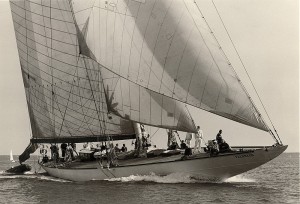
The sixth J-Class yacht to be built, and the second built on British soil was Velsheda . She was the only J not built as a contender for the America’s Cup. Her owner, WL Stephenson, who previously owned White Heather II, the 23-Metre converted to rate as a J-Class in 1930, had Velsheda built in steel in 1933 at the Camper & Nicholson yard. Velsheda was a great success. In 1935 she was significantly altered, her bow was snubbed around the waterline and her stern improved. The following season she won the King’s Cup at Cowes Week.
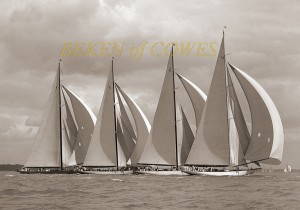
In 1934, Sopwith challenged for the America’s Cup. His challenger was Endeavour . She was Charles Nicholson’s third J-Class design and he said of her “She will have quite a normal hull… because I have thought it right to suppress possible experimental form, which would be most interesting to try out, but which I have to leave to American designers.” He did, however, produce the most beautiful J-Class and her rig was innovative.
Sopwith experimented with new running backstay strain gauges, which controlled the trim of the mast and used electronic windspeed and direction indicators. It has since been suggested that part of the reason for her failure in the Cup was due to all the gadgets on board. She was matched 83ft 3in on the waterline against Rainbow ’s 82ft. However, despite being thought to be the best challenger Britain has ever built, she did not win the Cup. Rainbow, which was considered the inferior boat, beat her by four races to two.

Rainbow was designed by W Starling Burgess and launched in 1934 from the Herreshoff yard where she was built in just 100 days. The J stepped a pear-shaped duralumin mast, designed to take the strain of the double-headed jib – first used on Whirlwind – and she was originally rigged with a Park Avenue boom. This was later removed because it was considered too heavy.
The UK Class was depressed with the death of King George V and scuttling of his yacht “Britannia” off the South of the Isle of Wight, in accordance with his will.
Of the American Js, Yankee was the only one to sail in British waters when she was bought by Gerald Lambert and crossed the Atlantic in 1935. She was scrapped in 1941. Enterprise and Whirlwind were both scrapped in America.
1937 saw the building of the last two J’s on both sides of the Atlantic. Both Ranger and Endeavour II took the waterline length to its extreme, measuring 87ft LWL . Ranger, the American boat, was built at Bath Ironworks in Maine and designed jointly by W Starling Burgess and Olin Stephens . It was a design combination, which produced the greatest J of the fleet – the ‘super J’ as she was later known. She was built, for the cost of the materials only, of flush riveted steel plating and soon after launching had an accident. The upper parts of her rod rigging which stayed her duralumin mast shook loose and her mast snapped “with a report like a cannon”.
Ranger’s success on the water was widespread. Of 37 starts she won 35. Owner-skipper Harold Vanderbilt described her as being “slower to turn and to pick up speed, but (she) held her way longer, and was perfectly balanced on the wind.” The challenger, Endeavour II, was designed by Nicholson again and built at the C&N yard. She too was steel, but flush-plated above and below the waterline. Sopwith towed her and Endeavour, plus an entourage of 100, to America where he worked on tuning her rig. Sadly, Ranger saw off the competition, easily winning four races, and dashing British hopes.
Although they became recognised the most beautiful yacht design in the world, only 10 J Class yachts were ever built – 6 in the USA and 4 in the UK. Most of these competed in trials for the America’s Cup, or competed in the Cup itself. Several existing large British yachts, ‘ Astra ’, ‘ Candida ’, ‘White Heather II’ and ‘Britannia’, the King’s yacht, were all converted to comply with the rule and raced alongside the J’s.
After the victory of Ranger over Endeavour II, Vanderbilt wondered whether the boat was so much faster than the competition that it might kill the class. History would show this was not the case as analysis of the Holm design shows that it would likely have been faster than Ranger.
1937 marked the end of an era – it was the last America’s Cup contest for 21 years and marked the end of Big Yacht racing. Shamrock V was sold to Mario Crespi, the Italian Senator and publisher, who converted her to a ketch rig and renamed her ‘Quadrifoglio’, with a literal translation giving her authentic name of ‘4 leaves’ in Italian. This was in accordance with an Italian law, which forbade foreign names.
Weetamoe was scrapped in this year, while at the end of the season Ranger was laid up, prior to being scrapped in 1941.
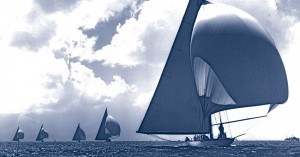
HANDLING THE J CLASS YACHTS IN THE 1930’s
The Skippers had to be experienced in racing and their skill on the race circuit became a matter of pride. These mighty craft had no engines and they had to be handled with great precision to get into and out of ports. Often their experience came from sailing all types of small craft, including fishing boats, during the winter months, when the J Class yachts were laid up. The permanent racing crew in the early days was probably around 16 men thou this may have been augmented to around 30 for racing. When not required for sail changes, spare crew were often moved to below decks.
With the incredible loads on the rigging and systems it was a constant concern that J Class masts could collapse in winds above a Force 3.
Sailing small boats in often inhospitable waters gave them the skills to manage their J Class yachts. The same is true today. Skippers have to deliver their yachts across Oceans, and compete around the race course, using their skills and all the technical advantages that are available today.
It is now clear that there was another J Class Yacht under development in 1937. Several years ago, drawings for a J-Class boat by Swedish naval architect Tore Holm were discovered by Fred Meyer, (Société Nautique de Genève – the Defender of the 32nd America’s Cup).
Now known as the Holm Project, this was to be a Swedish yacht with an innovative design. Many of the hull plates were made – and exist to this day. The project was put on hold prior to the outbreak of War in 1939 and was forgotten for more than 60 years. Endeavour and Endeavour II (K6) were laid up at Camper & Nicholson’s yard in Gosport, England.
Rainbow was scrapped. By the end of 1941, all the US yachts, which had been laid up were scrapped for their metal, with the last two being Yankee and Ranger. None survived. Yankee’s owner Gerard Lambert allegedly donated her scrap money from the yacht to Queen Mary to be used at her discretion in the London Hospital, in memory of the courtesies shown to Yankee by King George and the Queen herself.
Endeavour II was sold for scrap to Charles Kerridge Limited but her hulk remained until the late 1960s. Endeavour and Velsheda became houseboats in a mud berth on the River Hamble. This is where they stayed for more than 30 years, protected by the mud, which they had sunk into. Only Shamrock V was still sailing.
Endeavour II was broken up and scrapped in Southampton. Quadrifoglio (Shamrock V) had been hidden in Italy in a barn throughout the war years and following Crespi’s death in 1962 was sold to Piero Scanu, who saved her just two weeks before she was due to be broken up in Genoa.
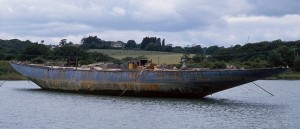
During the 1970s Endeavour’s hulk was sold for £10 and restoration was started.
Quadrifoglio (Shamrock V) arrived from Italy and was refitted at Camper & Nicholson’s yard where she had been built, supervised by Paolo Scanu the naval architect, and son of the owner.
The large holes in Endeavour’s hull were plugged and she was towed to the old seaplane base at Calshot Spit on the Solent to start restoration.
Terry Brabant rescued Velsheda from her Hamble mud berth and gave her enough of a refit to get her chartering and, occasionally, racing again in events like the annual Round the Island Race, hosted by the Island Sailing Club in Cowes. Despite being in rather poor condition she still acquitted herself well and looked magnificent from a distance. Swiss plans to restore her came to nought and the old racing yacht was eventually laid up afloat in Gosport. Elizabeth Meyer took on the challenge to continue with the rebuild of Endeavour at Calshot.
Quadrifoglio (Shamrock V) was purchased in 1986 by the Thomas Lipton Company, and given back her original name of Shamrock V, when she became the property of the Newport Museum of Yachting. Endeavour was towed from Calshot, to Cowes on the Isle of Wight to have her fittings and rigging fitted. She was then taken on a barge to the Royal Huisman Shipyard in Holland to continue and complete the rebuild.
Endeavour was relaunched in Holland. Endeavour and Shamrock V match raced each other over the Old America’s Cup course in Newport, Rhode Island in August.
Velsheda was purchased from a bankrupt C&N boatyard and brought to Southampton Yacht Services to start her rebuild. She was relaunched in 1998 and started her programme of racing and cruising around the World.
Velsheda, Shamrock V and Endeavour raced against each other in Antigua Classic Week.
The Owners met in England and formed the J Class Association to protect the interests of the Class, present and future. Class Rules were established for the construction of Replica Rebuilds from original plans. Shamrock V came out of a major refit at Pendennis in Falmouth under the supervision of the Dykstra office.

The first J Class Regatta is held in Christchurch Bay on England’s south coast over three days, followed by the Jubilee Regatta in Cowes.
Ranger replica was commissioned and construction started at Danish Yacht Shipyard.
Ranger was launched and started her racing programme.
Replicas of Endeavour II (Hanuman) and Ranger (Lionheart) are commissioned.
Replicas of Rainbow and Paine design (JH7) are commissioned.
Hanuman, replica of Endeavor II launched.
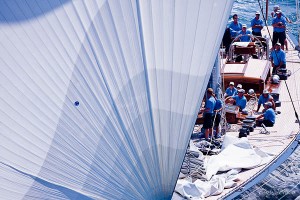
Lionheart launched.
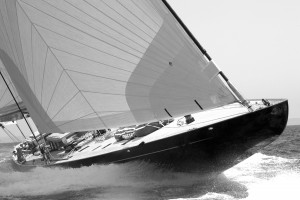
Rainbow launched. Cheveyo commissioned from Sparkman & Stephens / Spirit Yachts.

Information courtesy of the J Class Association
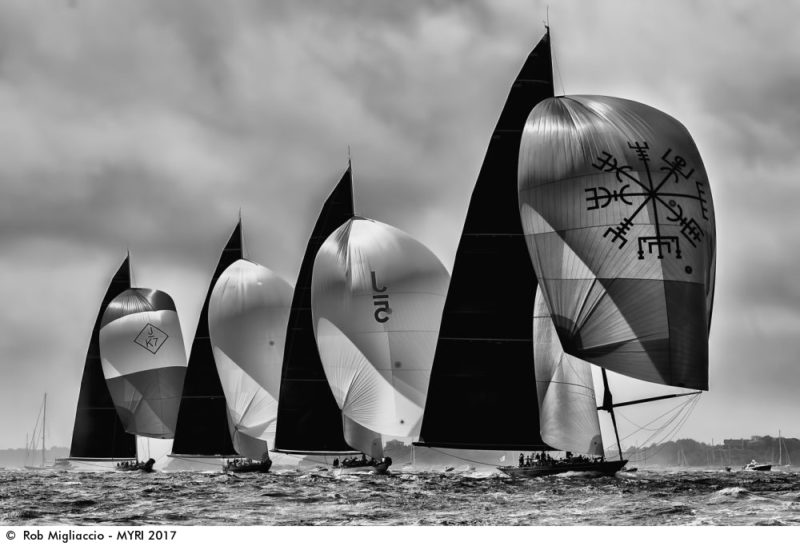
Svea, Velsheda and Topaz at the St Barths Bucket, 2018.
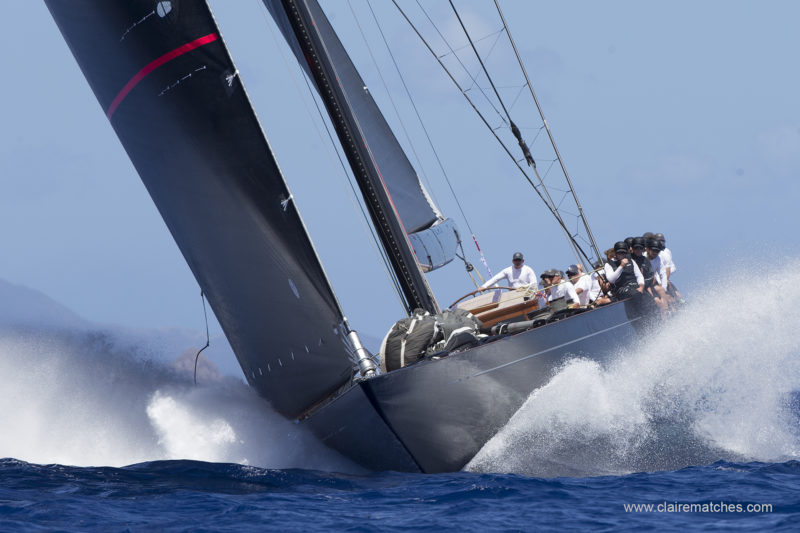
SHARE THIS:
- Yachts for Sale
Recently updated...
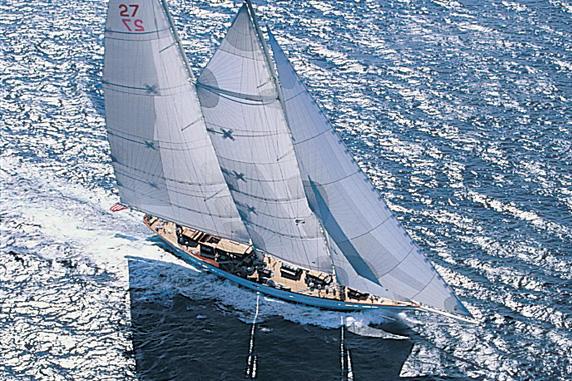
Write an Article
Covering news on classic yachting worldwide is a tall ask and with your input Classic Yacht Info can expose stories from your own back yard.
We are keen to hear about everything from local regattas and classic events to a local restoration or yachting adventure. Pictures are welcome and ideal for making the article more engaging.
With a site that has been created with the assistance of an international group of classic yacht enthusiasts we value your input and with your help we strive to make CYI more up-to-date and more informative than ever.
Please register and get in touch if you would like to contribute.

choose your language:
We’re passionate about Classic Yachts here at CYI, and we welcome submissions from all over the globe!
Captain, rigger, sail-maker or chef – if you’d like to write for CYI just let us know!
Email [email protected] to be set up as a Contributor, and share your Classic thoughts with the world.
ClassicYachtInfo.com has the largest database of classic yachts on the internet.
We’re continually working to keep it accurate and up-to-date, and we greatly appreciate contributions of any type. If you spot an error, or you have some information on a yacht and would like to contribute, please jump on in!
Don’t be shy…. Breeze on!
- Sell Your Yacht
Yachting World
- Digital Edition

Inside J Class yacht Svea – what it’s really like to race on board the newest member of the fleet
- Toby Hodges
- June 16, 2017
Toby Hodges sails the newest J Class yacht, Svea, and finds an elegant J crossed with a modern maxi grand prix yacht. Photos by Carlo Borlenghi
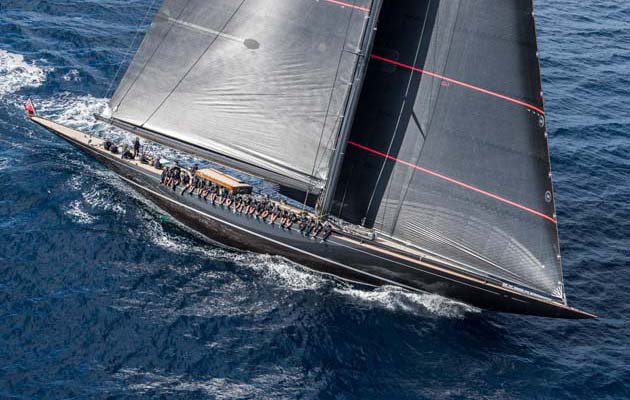
Svea , the newest addition to the now nine-strong J Class fleet, is one of the most outstanding new yachts of modern times – a harmonious meeting of historic and modern design; a blend of J Class lines and maxi grand prix yacht technology.
What follows will hopefully explain why she is the ultimate modern J; why her design and engineering had to be fast-tracked yet still produced such formidable results, and, crucially, why the other six Js and their 200 professional crewmembers racing in Bermuda this June were right to be worried about their new competition.
Svea ’s build programme has been unrelenting since her American owner bought the bare aluminium hull two years ago. A serial yacht owner and experienced racer, his sights were firmly set on the J Class regatta in Bermuda.
This is the biggest year for the J Class since they raced for the America’s Cup in the 1930s .
The first time six Js raced together was in St Barth in March , but when Svea joins the fleet in Bermuda, it will be the first time seven have lined up. But for that to happen Svea had to take shape fast.
It was just 17 months from signing the contract to her delivery – a race-ready superyacht prepared to sail across the Atlantic to her first race, just as the original Js were designed to do.
Svea arrived in Palma in March to start sea trials and race training. I was invited aboard in late April for what turned out to be the last day of race training – and a day I shall never forget.
1930s lines, modern layout
All Js dazzle on the water, but Svea simply stops you in your tracks. Her lines and deck are kept spectacularly clean, thanks to the compact wheelhouse, sunken wheel and wonderfully low boom.
Her dark metallic grey hull and black and red sail wardrobe lend her timeless lines a slightly menacing appearance – a purposeful racing look that belies the luxurious interior below decks. The aggressive aesthetics are in keeping with her name, a Viking word (it means Swede).

The lines for Svea are from a Tore Holm design from 1937, the last J drawn but one that was never built. Holm was one of the most gifted Metre Class designers.
Andre Hoek reworked the design to make it competitive for modern day racing. This is his third J project in recent years following Lionheart and Topaz .
Continues below…
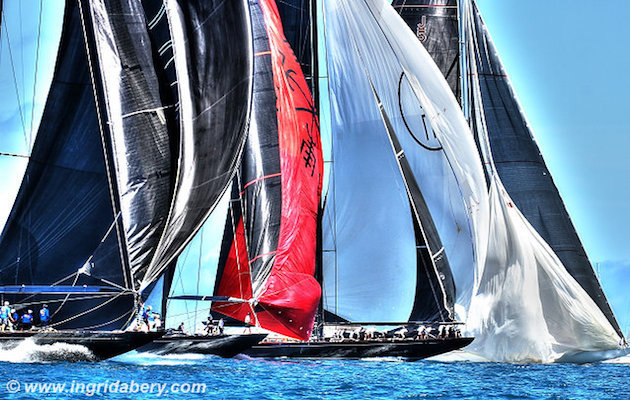
Brand new J S1 Svea stars in a record J Class racing fleet at America’s Cup
We expected her to be fast, but would the new J Class Svea be competitive too? It is a tall…

Svea rules the day and Lionheart wins the J Class Superyacht Regatta in Bermuda
If Svea’s third place in her first race yesterday was impressive for the debutante J Class member, her victory over…
Even compared to these ‘Super Js’, Svea is big. She is, by 15cm, the longest J overall at 43.6m /143.1ft LOA.
Think of classic J Class pictures from the 1930s and you picture a helmsman in a blazer and tie standing high on the aft deck battling a traditional wooden wheel. One of Svea ’s striking features is her extra large wheel, nearly half of which vanishes into a well below decks.
Hoek encouraged the extra wide, sunken wheel, a feature that Frers favoured in the 1980s because it allowed the helmsman to sit out and see the telltales. Here it allows the helmsman, trimmers and afterguard to remain in close communication.
Svea ’s deck layout is optimised for modern racing thanks to a large cockpit directly in front of the wheel from which the main, genoa and running backstays are all controlled. This means crew dealing with the runners and their fearsome loads are not on the aft deck and can safely operate the winches from a standing position.
The cockpit also doubles as a guest area when the yacht is in cruise mode, and there is removable seating and table.
I observed the action from the aft deck, in the company of Andre Hoek and the owner’s representatives and project managers Tako van Ineveld and Katie Beringer from Ineveld & Co. With its long overhangs a J’s ends are prone to pitching and as they are raced with no guardrails you need to be vigilant when the yacht is heeling.
Maxi grand-prix set-up with walnut interior
“Be careful on deck – we’re running big loads – up to 36 tonnes on the forestay,” Svea ’s captain Paul ‘PK’ Kelly told us as we left Palma’s STP shipyard. That’s the weight of a 60ft cruising yacht, I thought!
“It’s a maxi grand prix set-up in every detail,” said Tako van Ineveld. “We will race it as a grand prix boat. The owner loves that, but he also loves his walnut interior.”
And that, I thought, in a nutshell, is what today’s J Class yacht is all about.

When I joined, the 24-strong race crew and six permanent crewmembers had been practising multiple pre-starts and two or three windward-leeward races a day. Granted, they had no competition, but I soon appreciated how getting the timing for the manoeuvres down and, crucially, knowing exactly how long each will take, is invaluable preparation.
As in a regatta, it takes a couple of hours between the time a J leaves the dock to the point at which it is fully prepared for the start. But when we were, and fully heeled over in full trim, sailing at 9.5 knots upwind in 9-9.5 TWS, the feeling was euphoric.
Svea ’s immense black North 3Di RAW mainsail was allowed a little body to match the lighter conditions that morning. The sails are obviously big business on Js and Tom Whidden, North Sails’s CEO, was aboard for the day assisting the afterguard.
Furling headsails are a new addition this year for some of the newer Js. A crewmember needs to go aloft to attach the lashing to the head during the hoist, so it takes longer to swap headsails, but the advantage is a marked improvement in sail handling time.
The decision was taken early during Svea ’s build to incorporate furling headsails, for which a Reckmann torque tube is installed on deck. “It’s a big help not having to drag headsails out of the water,” van Ineveld remarked.
A glance aloft shows a particularly aggressive Southern Spars rig design. Every bit of weight and windage was minimised, with no staysail halyard and only a single VHF aerial permitted from the mast top for example.
The Southern Spars boom is tapered at each end and the spinnaker pole is a novel triangular shape – which is promised to be lighter than an equivalent tube, if more vulnerable to impact.
During a couple of the upwind legs I sat forward of the wheelhouse, watching the choreography of the pit and foredeck. While the main and trimmers may be in better contact with the afterguard in their aft cockpit setup, it’s still a separate camp up here.
The wide, shallow pit serves a useful area to tidy the vast amount of tail ends for spinnaker sheets, inhaulers, barbers, etc and for storing sails or snaking the spinnaker when zipping it up.
When the wind died down to 8 knots there was talk of whether to lead the sheets for inside gybing on the downwind leg. It’s amazing to think that a 950sq m kite can be gybed inside these days, but it’s a call that needs to be made relatively early as it involves changing the tack strop and sheet leads.
It’s almost impossible to take in the flurry of activity that two thirds of the crew are involved with around the mast and foredeck during a hoist – that was governed by Team New Zealand veteran sailor Andrew ‘Meat’ Taylor, a crew boss whose physical presence immediately ensures respect.
The spectacular bright red kite went fizzing up and ballooned into life, filling out a symbol depicting an ancient Nordic compass rose.
When the wind increased to 12 knots for the second practice race that afternoon, everything felt a little more intense on board. The headstay load pin readout was up to 30 tonnes. There was more water coming over the deck, the stiff carbon sails snapped into place with a bang, when the runner was eased, the blocks sounded like a shotgun going off, shuddering a vibration through the aluminium deck.
We were making up to 10.2 knots upwind now. Francesco de Angelis, the ex- Luna Rossa skipper hired as owner’s coach, calmly steered sitting to windward, alongside the likes of Peter Isler navigating and the owner’s long-standing tactician and fleet manager Charlie Ogletree (an Olympic Tornado sailor).
We crossed the line within a second of the gun and Svea stepped out into her full graceful stride on another long leg.
As we rounded the top mark into the short reaching leg a late call is made for an ‘Indian’ – or gybe-set. It’s a test designed to time the crew response.
We gybed and the kite was hoisted in little more than a boatlength – I counted five seconds. There is a nod of approval from Tom Whidden, who comments: “That’ll allow you to go either way round the top mark – a pretty nice exit manoeuvre to have, especially if you’re in a train.”
I was astonished at the speed of the gybes. The boom is sheeted to two winches, both capable of spitting line out at 220m per minute. So even with the boom fully out when sailing downwind, it is centred in a couple of seconds.
The speed of the manoeuvres, especially after only three weeks’ training, was seriously impressive. I later learned that this was their best training day. Even so, it was remarkably quiet and well drilled.
Van Ineveld told me the crew was very pleased with how reliable all the systems have been, especially the hydraulics. He pointed out that Js have habitually suffered from hydraulic power failure, which is why they put the Power Take Off (PTO) on the main engine. “So far we’ve had no lack of hydraulic power and we’re only running at 70 per cent”.
The hydraulic pressure for Js is normally 220bar, but Svea has larger diameter pipes allowing more flow at 300bar. “ Svea comes out of the box where others want to be,” says van Ineveld. “It’s where all the recent work to Lionheart and Hanuman has led – it’s the advantage of starting from scratch.”
Sailing Svea – the newest member of a revered class
During our final upwind leg, something happened that has changed my appreciation of sailing a J forever. Ogletree beckoned me to the wheel, mocking de Angelis by telling the elite helmsman: “You’re fired.”
My heart rate rocketed. I told myself to focus – I would only get a few taster seconds of the owner’s experience on the wheel. Sailing a J in race mode with race crew? More people have been to the moon.
But that ‘time’s up’ pat on the shoulder never came. The gargantuan wheel was entrusted to me for the rest of the upwind leg, the mark roundings, the spinnaker hoist and the downwind gybes all the way to the finish.

Focus, Toby! I asked de Angelis what sort of numbers we should be doing. “Just sail it to the telltales” was his refreshing answer – although in fact the genoa is professionally trimmed before I could even correct the wheel. The subsequent “9.8 knots target speed at 45º…” certainly helped.
Standing to leeward I was struck by the force of the wind slot between the sails and how hard it becomes to hear anything. As we tacked I bent for support to hand-over-hand the 8ft diameter carbon and teak wheel. Svea was back up to full speed. “You got the mark?” Ogletree asked. I nodded. “Over to you.”
Panic. Keep calm and don’t hit the buoy. I was aware of a flurry of activity on a foredeck far, far away. It helped make me appreciate just how focused the crew have to be on their role during a race. You have to be able to trust that everyone’s on it – I found it almost impossible to concentrate on anything other than pointing the boat from behind the wheel.
Turn the wheel and it’s still some moments (and distance) before the boat responds. It shows the value of anticipation.
We powered through a reach and bore away into a spinnaker set, at which point I went into a giddy trance, trying to mentally distill the moment while gybing Svea downwind. To drive the latest, most high-tech yacht in the most revered class in the world, with a full complement of rock stars and one of the world’s foremost sailors alongside coaching me through it… no, superlatives will never suffice.
“Well done everyone, that was a great day today,” said Ogletree in the debrief back on the dock, as my pulse began to settle. “The best we’ve sailed the boat and the best it’s gone.”
No room for delay
Svea ’s deck is kept wonderfully clean. The original lines didn’t even have a deckhouse, something the class insisted upon, says Hoek, but Svea ’s is kept low.
The furler and tensioner for the inner forestay are hidden under the deck. The anchor arm (removed for racing) rotates out of a locker and extends over the port bows. The chainplates with integrated turnbuckles are underdeck leaving just the ECsix rigging exposed.
It was eye-opening to see just how well Svea is finished below, particularly after visiting her in build at Vitters in December – at which time no cabin had yet been completed. Austrian company List pre-fabricated the interior entirely off site – a feat of 3D modelling and engineering.
The late Pieter Beeldsnijder (who worked on Athena , Hyperion , Hanuman , and Ethereal ) designed an elegant interior that is timelessly finished by Michiel de Vos.
Raised and fielded panels are used together with both decorative and practical features such as curved handrails built into panels. These reflect the owner’s taste for millwork carpentry. His preference for an open grain to the Claro walnut helped produce a tactile finish.
The intricate design details and the complex build skills required are particularly impressive when you consider the time frame in which Svea was completed. Normally an interior is built in parallel with the hull, but in this case it was built and fitted during the 14-month Vitters yard period.
“There was no room for delays with the race programme for Bermuda,” said Tako van Ineveld.
A traditional skylight floods the saloon in natural light. A sliding hatch in the bulkhead between the saloon and the galley further forward helps open out this space and allows the owner to incorporate the compact galley into his living space. It’s a clever arrangement that also keeps the teak-finished crew area forward private.
The layout elsewhere is traditional for a J, with guest en-suite cabins (twin and double) each side of the companionway and the master stateroom aft. The saloon and cabins lacked a personal touch during our visit – the bulkheads were still bare – however 16 marquetry pieces inspired by classic Beken pictures were imminently due to be hung.
Beeldsnijder succeeded in pushing accommodation space to the maximum inside. This is evident in the aft cabin, where the longitudinal frames rise up towards the transom through the berth and sofas. The low wheelhouse squeezes the accommodation in the passageway aft, but this has been cleverly sculpted out at shoulder height.
The engine room, accessed from the passageway opposite the compact navstation or via the saloon sole, is particularly well laid out offering easy access to all the systems.

One to watch
The flurry of new Js and competitive regattas in the last decade has brought with it a chase to upgrade to the latest equipment. This is particularly the case with Hanuman and Lionheart . Svea , however, is today’s true answer to a race-ready J class.
“What an accomplishment it will be to make the start line at Bermuda, a year after going into Vitters,” said captain Paul Kelly. When I left, I was bowled over by this yacht, build and crew work and results so far have been very encouraging .
I am also now that bit closer to understanding the charms of the mercurial J from an owner’s point of view. To buy and helm a J Class yacht in a competitive race is the ultimate money-can-buy experience in sailing – and, arguably, in any sport.
Latest News
Michael goldfarb wins the j/24 western regionals in seattle as teams warm up for the world championship.
With just two weeks to go until the Beechers Handmade Cheese Seattle 2024 J/24 World Championship, boats and contending teams are starting to arrive
Travis Odenbach’s Honeybadger Captures J/24 US National Championship
Eighteen teams competed from September 6-8 for the J/24 US National Championship at Wayzata Yacht Club in Wayzata, MN. Eight races were completed on
J/Fest & Fiesta Cup
Santa Barbara Yacht Club has hosted its Fiesta Cup for decades. In addition, this year they added a J/Fest Regatta for two successive weekends of
2024 District 15 Championship
Thanks for this report by Matt Barron, MYC Rear Commodore, Fleet Captain of J/24 Fleet #185: The Mendota Yacht Club, in collaboration with the Hoofer

J/Fest Seattle
This year’s J/Fest Seattle was hosted by the Corinthian Yacht Club of Seattle on Puget Sound on June 15-16. After an abbreviated three-race
Read More News

- Visit Our Blog about Russia to know more about Russian sights, history
- Check out our Russian cities and regions guides
- Follow us on Twitter and Facebook to better understand Russia
- Info about getting Russian visa , the main airports , how to rent an apartment
- Our Expert answers your questions about Russia, some tips about sending flowers

Russian regions
- Altay republic
- Irkutsk oblast
- Kemerovo oblast
- Khakassia republic
- Krasnoyarsk krai
- Novosibirsk oblast
- Omsk oblast
- Tomsk oblast
- Tuva republic
- Map of Russia
- All cities and regions
- Blog about Russia
- News from Russia
- How to get a visa
- Flights to Russia
- Russian hotels
- Renting apartments
- Russian currency
- FIFA World Cup 2018
- Submit an article
- Flowers to Russia
- Ask our Expert
Tomsk Oblast, Russia
The capital city of Tomsk oblast: Tomsk .
Tomsk Oblast - Overview
Tomsk Oblast is a federal subject of Russia located in the southeast of the West Siberian Plain, part of the Siberian Federal District. Tomsk is the capital city of the region.
The population of Tomsk Oblast is about 1,068,300 (2022), the area - 314,391 sq. km.
Tomsk oblast flag
Tomsk oblast coat of arms.

Tomsk oblast map, Russia
Tomsk oblast latest news and posts from our blog:.
10 November, 2019 / Tomsk - the view from above .
History of Tomsk Oblast
The development of this region began in the late 16th - early 17th centuries. The oldest settlement in the Tomsk region is the village of Narym, founded in 1596.
The town of Tomsk was founded as a military fortress by the decree of Tsar Boris Godunov in 1604. It was one of the outposts of the development of Siberia.
From 1708 to 1782, Tomsk was part of the Siberian province. In 1804, the town became the center of a separate Tomsk province, which included the current territories of the Altai krai, Novosibirsk, Kemerovo, East Kazakhstan, Tomsk regions and part of Krasnoyarsk krai.
In the 19th century, the growth of gold mining, smelting of metals, fur trade concentrated large capital in Tomsk, triggering a revival of trade. Important transport routes - the Moscow and Irkutsk tracts - passed through Tomsk.
In 1888, the first university beyond the Urals was opened in Tomsk, in 1900 - the Technological Institute, in 1901 - the first commercial school in Siberia, in 1902 - the Teachers’ Institute. By 1914, Tomsk was one of the 20 largest cities in the Russian Empire.
In 1925, the Tomsk Governorate was abolished and became part of the Siberian region. In the 1930s, Tomsk lost its administrative significance. In August 1944, the city became again a regional center.
During the Second World War, dozens of factories, educational, scientific, and cultural institutions were evacuated to Tomsk oblast and became the basis for the further development of the region in the postwar years.
In the 1950s, the first in the USSR nuclear center of the world level was created in Tomsk Oblast - the Siberian Chemical Combine. In the 1960s-1970s, oil production began on the territory of the region, a giant petrochemical plant was built - the Tomsk Petrochemical Combine.
Nature of Tomsk Oblast
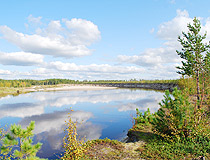
Small lake in Tomsk Oblast
Author: Andrey Gaiduk
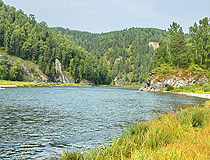
Beautiful nature of the Tomsk region
Author: Sergey Timofeev
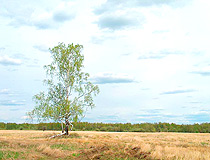
Tomsk Oblast scenery
Author: Egor Dyukarev
Tomsk Oblast - Features
The length of the Tomsk region from north to south is about 600 km, from west to east - 780 km. Most of the territory is difficult to access because of taiga forests occupying about 60% of the region and marshes (28.9%). The Vasyugan swamp is one of the largest marshes in the world.
The climatic conditions of the southern and northern districts of the Tomsk region are markedly different. Almost the entire territory of the region is located within the taiga zone. The climate is temperate continental. The average temperature in July is plus 24 degrees Celsius, in January - minus 16 degrees Celsius. The climate in the northern part of the region is more severe, winters are longer.
The largest cities and towns of Tomsk Oblast are Tomsk (570,800), Seversk (105,200), Strezhevoy (38,900), Asino (24,400), Kolpashevo (22,200). Lake Mirnoye located in Parabelsky district is the largest lake. The main river, the Ob, crosses the region diagonally from the southeast to the northwest, dividing it into two almost equal parts.
The main industries are oil and gas, chemical and petrochemical, engineering, nuclear, electric power, timber industry, and food industry. All the machine-building and metal-working plants are located mainly in Tomsk and partly in Kolpashevo and Seversk. Oil is extracted mainly in the north-west and west of the region.
The main branches of agriculture are meat and dairy cattle breeding. Agricultural fields occupy about 5% of the territory. Wheat, flax and vegetables are grown in small amounts. Cattle-, pig-, sheep-, and goat-breeding are presented as well as poultry farming. Fur trade (squirrels, sables, musk-rats) and fur farming (silver-black fox) are also developed.
Tomsk Oblast - Natural Resources
Tomsk Oblast is rich in such natural resources as oil, natural gas, ferrous and non-ferrous metals, brown coal (the first place in Russia), peat (the second place in Russia), and groundwater. In the region there is the Bakcharskoe iron ore deposit, which is one of the largest in the world (about 57% of all iron ore in Russia).
Forests are one of the most significant assets of the region: about 20% (more than 26.7 million hectares) of forest resources in Western Siberia are located in Tomsk oblast. The timber reserves amount to 2.8 billion cubic meters.
In the Tomsk region there are 18.1 thousand rivers, streams and other watercourses with a total length of about 95 thousand km, including 1,620 rivers with a length of more than 10 km.
The main waterway is the Ob River. The Ob length in the region is 1,065 km. The main tributaries of the Ob flowing into it on the territory of the Tomsk region are the Tom, Chulym, Chaya, Ket, Parabel, Vasyugan, Tym.
Attractions of Tomsk Oblast
The sights of Tomsk Oblast include the harsh beauty of Siberian nature, the variety of winding rivers and canals, as well as monuments of wooden architecture, and other places that keep ancient legends about this land.
Undoubtedly, it is worth to visit Lake Kirek, one of the most beautiful reservoirs of the Tomsk region. It is located only 50 km from Tomsk. According to legend, a local millionaire drowned his diamonds here during the revolution in 1917.
About 40 km from Tomsk, there is a lake complex of the village of Samus consisting of seven lakes. These lakes are known for their very dark water, which is explained by the streams flowing into them from peat bogs.
Near the village of Kolarovo, located 33 km south of Tomsk, there is Siniy (Blue) cliff. It is a three-kilometer precipice descending to the Tom River. The cliff got its name due to the gray-blue shale that covers it. Several centuries ago, after the founding of Tomsk, a watchtower was installed on the cliff, from which signals were sent to the fortress.
At the source of the Berezovaya River, 40 km southeast of Tomsk, there is such an attraction as the Talovsky bowls, a natural monument of national importance. These are huge natural figures in the form of vessels of oval form, covered from the inside by birnessite - a rare mineral.
There is a tourist attraction of a global scale in the Tomsk region - the Vasyugan marshes, the largest marsh complex in the world. It is also called the “Russian Amazon”, because the Vasyugan marshes are not inferior to the famous South American river by their scale.
To the collection of sights of Alexandrovsky district of the Tomsk region, the most distant from the regional center, we can add Lake Baikal, the namesake of the famous lake, Goluboye (Blue) Lake, Malyye mountains (highlands) in the valley of the Vakh River and the Paninsky reserve, where the ancient burials of the Khanty and Ostyaks are preserved.
On the right bank of the Ob River, more than 200 km from Tomsk, the village of Mogochino is located. St. Nicholas Convent can be found here.
In Tomsk itself, plenty of monuments of wooden architecture deserve attention. In total, there are more than 700 objects, including 109 monuments of federal and regional significance.
Also in the Tomsk region you can visit more than 100 museums (most of them are located in Tomsk). The most popular museums are the Museum of History of Tomsk, the Memorial Museum “The NKVD Investigative Prison”, the Museum of Wooden Architecture, the Tomsk Regional Art Museum.
Tomsk oblast of Russia photos
Pictures of the tomsk region.
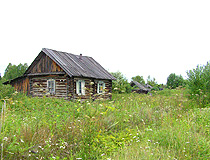
Abandoned village in Tomsk Oblast
Author: Sergei Loyko

Orthodox chapel in the Tomsk region
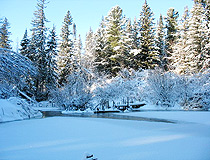
Winter in Tomsk Oblast
Author: Koshkin V.

Field road in Tomsk Oblast
Author: Dolgin Andrey
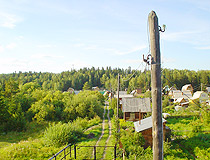
Country life in Tomsk Oblast
Author: D.Lebedev
- Currently 3.00/5
Rating: 3.0 /5 (203 votes cast)

The global authority in superyachting
- NEWSLETTERS
- Yachts Home
- The Superyacht Directory
- Yacht Reports
- Brokerage News
- The largest yachts in the world
- The Register
- Yacht Advice
- Yacht Design
- 12m to 24m yachts
- Monaco Yacht Show
- Builder Directory
- Designer Directory
- Interior Design Directory
- Naval Architect Directory
- Yachts for sale home
- Motor yachts
- Sailing yachts
- Explorer yachts
- Classic yachts
- Sale Broker Directory
- Charter Home
- Yachts for Charter
- Charter Destinations
- Charter Broker Directory
- Destinations Home
- Mediterranean
- South Pacific
- Rest of the World
- Boat Life Home
- Owners' Experiences
- Conservation and Philanthropy
- Interiors Suppliers
- Owners' Club
- Captains' Club
- BOAT Showcase
- Boat Presents
- Events Home
- World Superyacht Awards
- Superyacht Design Festival
- Design and Innovation Awards
- Young Designer of the Year Award
- Artistry and Craft Awards
- Explorer Yachts Summit
- Ocean Talks
- The Ocean Awards
- BOAT Connect
- Between the bays
- Golf Invitational
- BOATPro Home
- Superyacht Insight
- Global Order Book
- Premium Content
- Product Features
- Testimonials
- Pricing Plan
- Tenders & Equipment
8 reasons to buy a J Class yacht
Own a piece of history with a j class yacht.
J Class yachts were the original America’s Cup racers. In 1929, tea magnate Sir Thomas Lipton commissioned the build of the first J Class yacht for his fifth and last America’s Cup bid. The boat was 36.58 metre Shamrock V, which was the first and only J Class yacht to be constructed in wood.
“She was built by possibly the most famous British yachtsmen ever, Sir Thomas Lipton, who tried for years to wrestle the America's Cup from the Americans, culminating in his building Shamrock V ,” says Mike Horsley of Edmiston .
Amazingly, even though Shamrock V was the first J Class created — designed by Charles Nicholson and built by Camper & Nicholsons — she remains in perfect condition, thanks to many refits over the years. In her most recent upgrade she received two new generators.
Sail with a J Class thoroughbred racer
J Class yachts are bred for racing, and it's their one design class that makes them so ideal for the sport. When you see Js out on the racecourse, the first thing that catches the eye — besides their staggering beauty — is that the race is so close!
When the J Class yachts started racing in the 1930s, it was under the Universal Rule, which used waterline length, displacement and sail area to control the rating. Nowadays, the fleet is made up of an intriguing mix of refitted originals and new-build replicas, some outfitted with luxurious interiors.
The new J Class Rating takes this into account, using a computational model that considers hull design, mast and sail plan to give each yacht an adjusted time. Even still, the relative difference in performance of Js is small. The J Class racing is thrilling, action-packed and always a fight to the finish.
Own an America’s Cup winner
Or a replica anyway… The original Rainbow and Ranger J Class yachts both held their own, aptly defending the America’s Cup. Harold Vanderbilt invested in J Class yachts to defend the Cup three times, with Enterprise in 1930, Rainbow in 1934, and Ranger in 1937. Although the originals didn't survive the cull for metal in WWII, replicas of both Rainbow and Ranger have since been built, which must be the next-best thing to owning the original winner.
The new 39.95 metre spectacular J Class yacht Rainbow was built by Holland Jachtbouw in 2012, based on the original Frank Paine lines of the 1934 America’s Cup winner. Rainbow was sold in 2015 .
Compete during the next America’s Cup on your J Class yacht
The J Class yachts are returning to their rightful home, the America’s Cup. The J Class Association is an active organisation, preserving the interests of the class and organising face-offs at regattas around the world. But the J Class Regatta, set to take place during the America’s Cup 2017 , will be the biggest reunion yet — both in terms of historical relevance and in number of Js on the start line, organisers predict.
Want to take part in this historical event and maybe win it all? Easy; get yourself one of the Js currently for sale. Ranger , for instance, was known as the “Super J” for her defence against Endeavour , and her replica is for sale with Northrop & Johnson .
Enjoy the unrivalled beauty of a J Class yacht
Sleek, slim and seeming to just slip through the water, the J Class yachts turn heads wherever they roam. While they were designed as racing beasts, these boats are undeniably beauties.
“One main justification for the hassle and expense of yacht ownership is that almost indefinable pride one feels when approaching one’s yacht at anchor in a beautiful bay,” says Mike Horsley of Edmiston. “There can be nothing in history more pride-inducing than a J!” It's okay to buy one because you think J Class yachts are simply the prettiest things on the water.
Be a steward of history by owning a J Class yacht
As many a classic aficionado can tell you, the joy in preserving and passing on a part of history is a main deciding factor in owning a classic yacht . It's no different with J Class yachts.
The J Class revival is largely credited to one such history lover, Elizabeth Meyer, who restored the original J Class yacht Endeavour , which was built for Sir Thomas Sopwith. The 39.56 metre iconic Endeavour was the first J Class yacht to be restored.
“It was Endeavour that set the original comeback of the whole J fleet,” says Alex Busher of Edmiston . “Elizabeth Meyer should naturally take credit for her energy, enthusiasm and foresight at the beginning of this new [J Class] era.”
Endeavour is currently for sale with Edmiston, asking €19,950,000.
Gain entry to an elite club with a J Class yacht
When you own a J Class yacht, you are one of a select few. If your dream is to own a J Class sailing yacht, and even build your own yacht, it is possible to gain entry to this elite and private club by buying your way in and building a J design.
Holland Jachtbouw HJB, which launched Topaz in 2015, owns the exclusive rights to build two J Class yachts, Yankee and J9 . The Dutch builder has an official partnership with the J Class Association . Designed by Frank Paine, 38.1 metre Yankee was the third American J. She had a nearly straight sheerline and beautiful lines. While she was a sprightly and powerful defender, she never did take the Cup — but her designers Dykstra Naval Architects have optimised her design, and all she needs is for the right owner to bring her back to the life at HJB.
HJB also has the rights to build the previously unbuilt J Class yacht J9. Frank Paine drew the yacht as a defender for the last America’s Cup to be held with Js, but she was never built. Hoek Design has now carried out extensive research, which means if and when J9 is built, she is will be a contender on the racecourse and then some.
Experience the full package of J Class yachts
Beauty, racing brawn and technological brains combined? J Class yachts really have it all. “Apart from their obvious beauty and power under sail, they represent the apogee of technological achievement in their time,” says Mike Horsley. While the J Class yachts appear as classic beauties now, they were boundary-pushing creatures in their day, even incorporating early aircraft design.
“Owning a J Class yacht is the best medicine for someone with a passion for classic sailing yachts, both cruising and racing,” says Thys Nikkels, managing director of Dykstra Naval Architects.
The J Class yachts are also proven ocean-goers and many have comfortable, luxurious interiors, making them far more welcoming for long voyages than a modern, flat-out racing yacht.
“Although built strictly as racing machines, Shamrock and her J sisters have accomplished many remarkable voyages, including Pacific and Atlantic crossings, and work as charter yachts in different areas of the globe,” says Mike Horsley. “No other yacht design combines all these attributes in such a beautiful form.”
Sponsored listings
The J Class has its roots in the oldest international yacht race in the world, The America’s Cup. This International Event was born from a race around the Isle of Wight, hosted by the Royal Yacht Squadron and called the R.Y.S. £100 Cup (a.k.a. One Hundred Sovereigns Cup).
Image Credit:

R.Y.S. £100 Cup Race
Pre j class.
1929 - 1937

This site uses cookies to enhance your experience. By continuing to browse the site, you consent to the use of cookies. View our Privacy Policy for more information.

We apologize for the inconvenience...
To ensure we keep this website safe, please can you confirm you are a human by ticking the box below.
If you are unable to complete the above request please contact us using the below link, providing a screenshot of your experience.
https://ioppublishing.org/contacts/

IMAGES
VIDEO
COMMENTS
The Yachts. The J Class includes a mixture of refitted surviving yachts along with a number of new yachts faithfully built to original hull lines from 1930's designs, with more yachts currently in build. ... Events. The J Class Association was founded in 2000 to protect the interests of the Class, present and future, and organises an annual ...
Discover the yachts in the J Class Association. In total nine J Class yachts are currently active, including three original surviving Js - Velsheda, Shamrock and Endeavour - and six replicas that have been built since 2003; Ranger, Rainbow, Hanuman, Lionheart, Topaz and Svea.
In total nine J Class yachts are active now with six replicas having been built since 2003; Ranger, Rainbow, Hanuman, Lionheart, Topaz and Svea. The J Class Association (JCA) was founded to protect the interests of the Class, present and future. Among its responsibilities it monitors and agrees the veracity of designs to which new replica boats ...
J Class yacht Velsheda sailplan. LOA: 39.25m/128ft 9in · LWL: 27.8m/91ft 3in · Beam: 6.57m/21ft 7in · Disp: 180 tonnes. Original lines: Charles E Nicholson. Modified design: Dykstra Naval ...
Official J Class. 24,359 likes · 983 talking about this. The J Class Association was founded to protect the interests of the Class, present and future. Official J Class
J Class yachts Velsheda, Topaz and Svea downwind legs. The J Class is one of several classes deriving from the Universal Rule for racing boats. The rule was established in 1903 and rates double-masted racers (classes A through H) and single-masted racers (classes I through S). ... The creation of the J Class Association [10] in 2000 and the ...
Details of the 2024 World Championships in Barcelona will shortly be available on the J-Class Association website www.jclassyachts.com and circulated to Owners ... brought the crowds out at the Fanzones and Race Village and gave a truly global audience a thrilling spectacle of top-class racing in the dynamic AC75 yachts. Posted on 15 Sep ...
The Class Association is actively encouraging J Class owners to commit to the 2024 event, with five confirmations received to date. As anticipation builds for this unparalleled gathering of maritime history and contemporary excellence, the J Class World Championship promises to captivate audiences both on and off the water, offering a rare ...
J Class Yachts. Go inside the world of the iconic J Class yachts with reports on board these famous vessels, interviews with their owners and coverage of the J Class World Championships. Boat International is the official media partner of the J Class Association.
The J Class are set to reunite for the 37th America's Cup as organisers invite the fleet to race in a J Class World Championship in Barcelona between 7-11 October, 2024. Comprised of three refitted original yachts and six new yachts built to original hull lines from the 1930s, there are currently nine J Class yachts active worldwide.
Holland Jachtbouw (HJB) has launched J8, now named Topaz. The latest J Class yacht has been hotly anticipated and now brings the J Class Association fleet to a total of eight yachts on the water. Known as Project J8 while in build, the 42.62 metre J Class yacht Topaz was launched from HJB's shipyard in Zaandam, The Netherlands.
The Owners and Class Association are excited to hold our World Championships in Barcelona which will be the highlight of our season after the Maxi Worlds in Porto Cervo during September 2024 and the Mahon regatta in May 2024. The boats will arrive to the Port Vell and be situated right in the heart of the superyacht basin giving spectators a ...
The sixth J-Class yacht to be built, and the second built on British soil was Velsheda. She was the only J not built as a contender for the America's Cup. Her owner, WL Stephenson, who previously owned White Heather II, the 23-Metre converted to rate as a J-Class in 1930, had Velsheda built in steel in 1933 at the Camper & Nicholson yard.
A serial yacht owner and experienced racer, his sights were firmly set on the J Class regatta in Bermuda. This is the biggest year for the J Class since they raced for the America's Cup in the ...
The owner then informed Hoek he'd like to build a new yacht based on that design. Warm, teak paneling lines the bulkheads, and nothing is fussy or overstuffed. Measuring 43.4 meters (142 feet), Lionheart is the longest J Class in existence. She also has astounding 17-meter (56-foot) overhangs. She's built entirely of aluminum, something the ...
Travis Odenbach's Honeybadger Captures J/24 US National Championship. Eighteen teams competed from September 6-8 for the J/24 US National Championship at Wayzata Yacht Club in Wayzata, MN. Eight races were completed on. Read More. September 9, 2024.
In 1986, Shamrock V returned to the ownership of the Lipton Tea Company who donated her to the Museum of Yachting at Newport, Rhode Island. Another extensive and famed restoration was carried out by Elizabeth Meyer in 1989, which alongside her restoration of Endeavour, returned these two J Class to racing form and allowed the first J Class ...
Business, Economics, and Finance. GameStop Moderna Pfizer Johnson & Johnson AstraZeneca Walgreens Best Buy Novavax SpaceX Tesla. Crypto
Tomsk Oblast - Overview. Tomsk Oblast is a federal subject of Russia located in the southeast of the West Siberian Plain, part of the Siberian Federal District. Tomsk is the capital city of the region. The population of Tomsk Oblast is about 1,068,300 (2022), the area - 314,391 sq. km.
The J Class Association is an active organisation, preserving the interests of the class and organising face-offs at regattas around the world. But the J Class Regatta, set to take place during the America's Cup 2017 , will be the biggest reunion yet — both in terms of historical relevance and in number of Js on the start line, organisers ...
The J Class has its roots in the oldest international yacht race in the world, The America's Cup. This International Event was born from a race around the Isle of Wight, hosted by the Royal Yacht Squadron and called the R.Y.S. £100 Cup (a.k.a. One Hundred Sovereigns Cup). 1851 - 1928. 1929 - 1937.
THE 10 BEST Tomsk Sights & Historical Landmarks. 1. Chekhov Monument. This monument is located on the bank of the Tom River. Directly across from it, there is a restaurant. I did not go to... 2. Monument to Happiness/ Monument Shhas Spoyu... I found him sitting and watching everyone walking by.
formation conditions of oil-reservoir rocks J 1 1 and J 2 1 in Kazan oilfield (Tomsk Oblast) To cite this article: L Krasnoshchekova et al 2015 IOP Conf. Ser.: Earth Environ. Sci. 24 012018 Vasyugan horizon structure features within View the article online for updates and enhancements. Related content Textural and structural features,